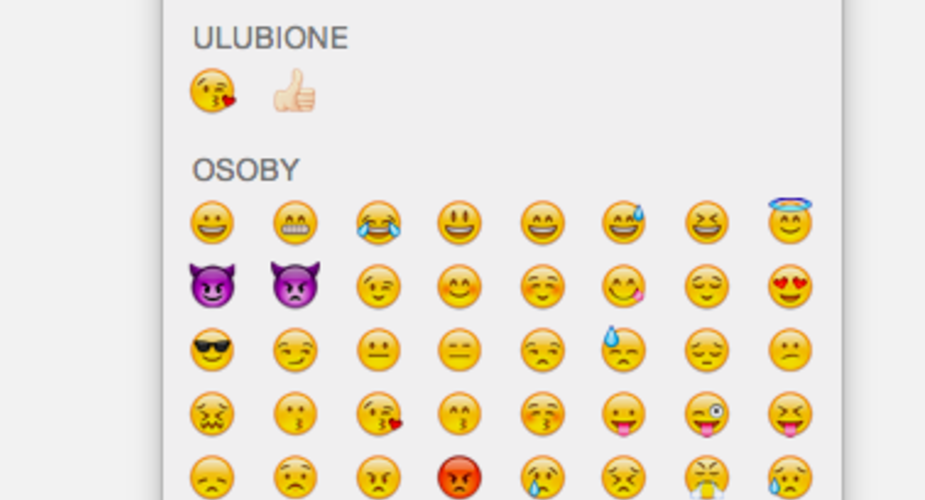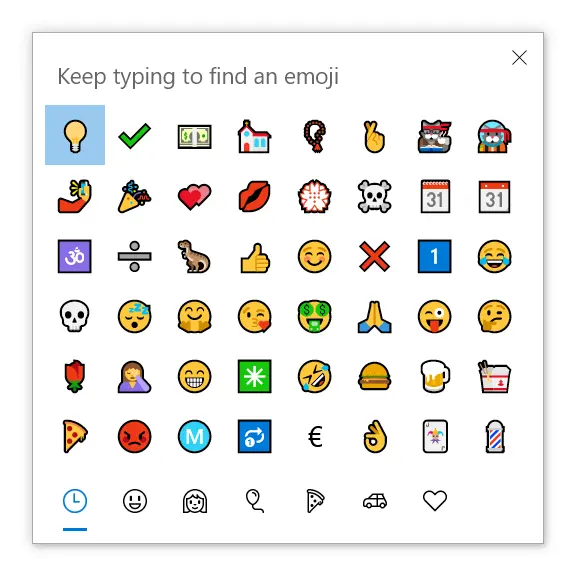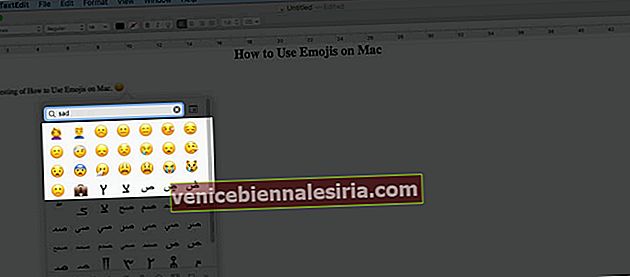
- #USING EMOJIS ON MAC HOW TO#
- #USING EMOJIS ON MAC WINDOWS 10#
- #USING EMOJIS ON MAC PRO#
- #USING EMOJIS ON MAC PLUS#
- #USING EMOJIS ON MAC SERIES#
Step four: close the e moji selection window and press Enter in the keyboard to save the new name you create.īy the way, when you are saving a new file in Word, Excel, Notepad or any other programs, you can also insert Emojis by pressing the shortcuts I have provided in step two. (You can switch between different categories at the bottom of Emoji Panel to find more Emojis.) Step three: browse and choose the Emoji you’d like to add to the name. Step two: you need to bring up the Emoji Panel by using the following shortcuts. Step one: you should locate the file name or folder name that you want to add Emoji to.
#USING EMOJIS ON MAC HOW TO#
As for how to do, please see the next paragraph.
#USING EMOJIS ON MAC WINDOWS 10#
In order to make your file/folder name more recognizable in Windows 10 (v 1709 and the later), you should adopt an Emoji by making use of the Emoji Panel or Picker. Category: How to get new emojis on iphoneShow details Expires: February, 2022 / 63 People Used. In general, when you are editing the name of a file or folder, you may see a prompt message informing you that you are adding unsupported characters to the name – A file name can’t contain any of the following characters: \ / : * ? ” |. Click on any text input area, and when you see a cursor, press Control+Command+Space.

First, open the app you’d like to insert the emoji into.

When the little window with all the Emojis appears, tap on the tiny icon at the top right of the window.
#USING EMOJIS ON MAC PRO#
Please read this webpage if you have deleted files in Windows 10 by mistake. You can quickly insert an emoji anywhere on macOSin a messaging app, in an email, or even in a document you’re editing. Furthermore, where are Emojis on Macbook Pro Press the Control + Command + Spacebar keys on your keyboard at the same time. You only need to access the Emoji Panel feature, which is built in Windows, and pick the emoji you want to add. Its the bar that displays your open apps and the Start menu, usually at the bottom of the screen.2Select Show touch keyboard button. Microsoft allows you to add Emojis to computer name, drive name, file name, and folder name.
#USING EMOJIS ON MAC PLUS#
Press Alt plus the corresponding number in. You can also use keyboard shortcuts for more basic emojis if you find the new keyboard unwieldy. Scroll to the very top of the Emoji icon panel and then click into the Search field. You can use emoji in nearly any Mac app through the 'Emoji & Symbols' menu. Use the tabs at the bottom to select between categories.
#USING EMOJIS ON MAC SERIES#
What does it really mean? Actually, Emojis refer to a series of ideograms and smileys, which are frequently used in chat and BBS. Access the Emoji icon panel as usual in Mac OS, the fastest way is to use the Command + Control + Spacebar keyboard shortcut.

Today, I am going to introduce Emoji to you and show you how to use it in file/folder names on Windows 10.

That’s why some people want to add Emoji to the file or folder name. Perhaps my favorite feature is its integration with the entire operating system: highlight and right-click just about anything, or use the three finger tap gesture, and you can quickly look up any word.Emoji is more vivid than pure words it can express users’ feelings more accurately. Many people overlook the Dictionary application that comes with macOS, and tha’ts too bad: it’s a whole lot more than just a dictionary. RELATED: Your Mac's Dictionary Is More Than Definitions: Here's What You Can Search Look Up Any Emoji QuicklyĮmoji are tiny, and sometimes it’s hard to figure out what they’re supposed to be. This uses the native auto-replace feature in macOS to accomplish pretty much the same thing, the main difference being that you need to know the exact spelling for an emoji in order to use it. If you’d rather not have a third party program running constantly, check out Macmoji instead. Sure, it only saves you a couple of keystrokes, but that might be worth it. If you”re really addicted to emoji, I highly recommend you set this program up. Real-time search results show you your options as you type, and you can hit “Enter” to choose something. Using it couldn’t be simpler: just type a colon followed by the word you’re looking for. Rocket is a simple, free Mac application that brings this feature to every program on your Mac.


 0 kommentar(er)
0 kommentar(er)
